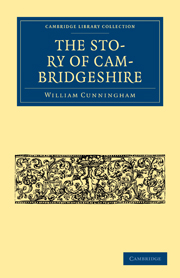VI - FOOTPRINTS
Published online by Cambridge University Press: 07 September 2010
Summary
In this last lecture I hope to give you a short summary of the main points to which I have directed your attention throughout the course. I have been directing your attention to what are, in Longfellow's phrase, “footprints in the sands of time.” We may, perhaps, change the figure and think of the church in every parish as a monument which has stood for many ages, and note how different generations have left their marks upon it.
There is something in the cathedral of Ely to remind us of each generation for centuries. There is the great Norman nave, built of stone which came across the seas from Caen. It was begun about 1083 and finished in 1130, just about the time of Domesday Book, and the Galilee about the time of Magna Carta. The extreme east end of the choir, with its pointed windows, dates from the time of Henry III, and was built by Hugh of Northwold, Bishop of Ely 1229–1254. Then the disaster which had long threatened the monks overtook the church: the great central tower fell on February 22, 1322, and broke down the three western bays of the choir in its ruin. But the sacrist, Alan of Walsingham, who was a great architectural genius, set about repairing the disaster at once, and finished the Lantern, which is the characteristic feature of Ely cathedral, in 1342.
- Type
- Chapter
- Information
- The Story of Cambridgeshire , pp. 55 - 63Publisher: Cambridge University PressPrint publication year: 2009First published in: 1920

